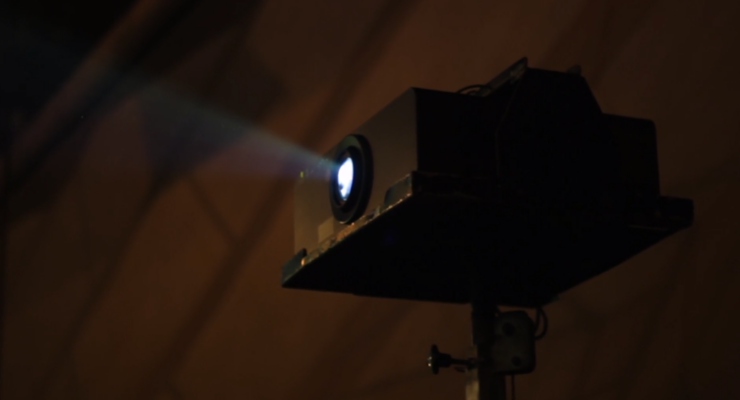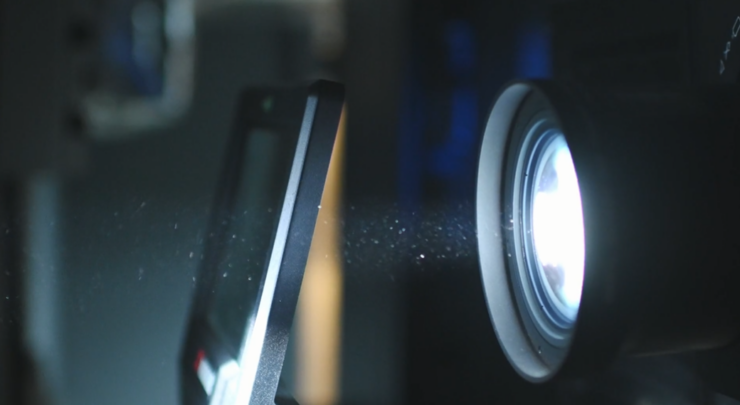If you are looking to buy a projector surely the first question you ask yourself is which technology to choose, what is better DLP or LED? And LCD?… Anyway, there’s no better or worse.
And it shouldn’t be the main reason why we chose a projector. If not more for the set of features it offers us, such as the bill level, the contrast or the resolution, at a certain price.
If you want to know those features in depth to feel safer when choosing a projector, here is a complete guide that will help you decide.
How to choose Projector
Table of Contents

First of all, a projector must be balanced. What good is full HD or 4k resolution if contrast or brightness is not enough to enjoy it? But each technology has its own characteristics and it’s not any more to know them.
Let’s see each one, and which one you should choose a priori based on how you’re going to give it. And I say “a priori”, because these technologies have evolved a lot these days. Brands make efforts to improve their weaknesses, and it is no longer uncommon to find highly compensated projectors, with good attributes for features that are in theory looser than that particular technology.
Video projection technologies
Before starting with them it should be clarified that video projection technologies are classified according to:
How they project the image: LCD vs DLP vs LCOS
The light source used: traditional lamp vs led vs laser. Or even hybrid led/laser technology, which we’ll then see. Therefore:
If you’re wondering the differences between DLP and LED, or between LCD and LED, they don’t exist. An LED projector can use both technology and technology.
The first to emerge is the CT or “cathode ray tubes”, along with the old televisions. But we’re not even going to talk about her. His successors have passed him from the right. The last one to get in on this fight has been laser projection technology. And who knows, the same thing in a few years becomes a standard and we start to see swords like in Star Wars.
How does a projector’s LCD technology work? And 3LCD?

“Liquid Crystal Display”. It is considered a transmission technology since it uses a panel of three liquid crystal displays, one for each primary color: red, green and blue (hence also known as 3LCD), which let or not pass the light. This fact of letting in or blocking the light allows generating a wide range of colors and shades. That’s why this technology stands out for the naturalness of the colors.
For the curious, you can see how this technology works int he following video:
Advantages of LCD projectors
More natural colors: They project all colors on the screen at the same time, so they have greater fidelity and intensity. Let’s say your image is more relaxed.
Higher brightness: Not that they have more brightness, but that they take better advantage of the light emitted.
Inconvenient LCD projectors
Maintenance: Although they have gained a lot in this field using layers of glass, this technology is sensitive to dust that accumulates. Therefore it is convenient to clean the filters, or the dust will end up appearing on the screen in the form of dots (especially annoying in dark images), or even the panels may burn. Surely we hear that the projector burns, or suffers from a burnt effect, referring to the lamp reaching the end of its useful life.
Wire effect: In low-resolution conditions this effect can occur, appreciating pixel separation lines and resulting in the impression of having some grids in front of them. This is because the projector optics have a higher pixel density than the image they project, allowing these fine lines, which are much smaller than the pixels themselves, to be viewed.
Ghost effect: If a static image is projected over a long period of time, the LCD tends to retain the old image over the new one, causing this ghost effect. It is something that has been sought to correct, and that can happen for multiple causes, such as a bad analog connection (VGA) instead of digital (HDMI), magnetic interference… but the most common is when the bulb starts to reach the end of its useful life.

LCD technology is for you if…
What you are looking for is a cheap projector. You’re looking for more natural or more relaxed colors. Also for professional environments, where it is better to gain in luminosity even at the cost of reducing the greater color depth that DLP provides with its greatest contrast.
Due to the intrinsic manufacturing costs of one technology and another, in the lower range of all the LCD is unrivaled. In fact, all the cheapest projectors on the market are of this technology. By this, we do not mean that LCDs do not offer us results in the mid- and high-end ranges. Not at all. But let’s make it clear that LCDs reach prices below even 100 degrees when it’s rare to see a DLP drop below 200 degrees.
How does a projector’s DLP technology work?
“Digital Light Processing”. It is a reflection technology, where the lamplight is reflected by a DMD (Digital Micromirror Device) chip composed of millions of pivoting microscopic mirrors. The image it forms is in black and white, so they introduce a disc between the chip and the lamp, also called the color palette. This has at least 3 color filters, although some products incorporate additional filters. The problem with this solution is the noise caused by this wheel when turning. To avoid this, 3 chips are also used (one for each primary color), but it makes the product much expensive.
If you want to learn more about how it works, you can watch the following video:
Advantages of DLP projectors
Better contrast: As they say, “blacks are blacker.” Due to the superior native contrast offered by this technology, it is considered more “cinematographic”, achieving deeper blacks and brighter whites.
Sharper: When you have a shorter process or route when projecting the image, your refresh rate is higher. Therefore, the definition of the image and its sharpness are superior.
Space and maintenance: The components make it possible to develop products that take up a smaller space and are more comfortable to transport, while not requiring filters as the chip is vacuum packed and do not allow dust to enter.
DLP projector scars
Noise: The noise caused by the color palette can become very annoying, especially if we are close to the device (as it is logical).
Rainbow effect: They are brief flashes of red/green/blue shadows that are distinguished when the content is very white or bright and the background is dark. It is mainly noted in the subtitles and end credits of the films. As it depends on the number of discs used for each color and the speed of rotation, it is a problem practically remedied today. It should be emphasized that the DLP projectors of 3 chips do not suffer this effect, since the 3 components of the color are generated simultaneously.
Anyway, this defect already seems like a thing of the past or of low-end models. Besides, not everyone perceives it the same. In fact, it is normal not to perceive it, or to be very mild. But for people sensitive to it it is something very annoying and that produces a headache, so in that case it will make a difference. Before making any decisions it is advisable to try the projector first. But don’t worry, it’s normal that it doesn’t affect you.
Here we leave you a couple of videos where you can see this defect. The first, the famous chase scene in Tangier from the film “The Bourne Ultimatum”. And the second with a static image where when moving the mobile quickly while recording, we can see the red, green and blue lines of this rainbow effect.
Important:
- Remember that this is only the case with old and low-end models, as we have explained.
DLP technology is for you if…
What you want is a projector where a good contrast takes, looking for a much more cinematic immersion. In addition, dust is not your enemy, as in the case of LCDs, so it does not require maintenance in that regard.
As we have already mentioned, it is not in vain considered home cinema technology par excellence. That’s why it’s very implanted in theaters and homes, and in reality its problems of noise and rainbow effect are increasingly cushioned. If we want to avoid them, we can go to a DLP of 3 chips, but their price increase is not worth it at home. If in the case of cinemas or professional environments.
Differences projector DLP vs LCD in images

Okay, but let’s cut to the chase. What difference do we find in the projection of LCD vs DLP images?
Well, if you search online you will see that surely the information is very skewed to one side or the other. Depending on which one they want to sell you. The case is that it will depend on both the environmental conditions or the screen, as well as the other characteristics of the projector. As well as the demand demanded by the content that we project.
Therefore, and only for illustrative purposes, here are some confronted images of the two projection technologies.
As you can see from the images on the left, it looks like the LCD wins. It has higher brightness and more natural colors. However, in the images on the right, when the demand for contrast with blacks and whites is higher, it is the DLP who is favored.
However, that these images only serve as an illustrative of the characteristics of each technology, as the conditions have been forced to see how each technology responds before more extreme situations. Don’t be left with the LCD not playing black and white well, or that the DLP offers off images.
How does a projector’s LCoS technology work?
And finally, we have LCoS technology: “Liquid Crystal on Silicon”, a hybrid on horseback between DLP and LCD that tries to bring together the advantages of both. Here we have a liquid crystal display that will or will not let light pass (LCD transmission technique), and a silicon device that will return it to form the projected image (DLP reflection technique).
Therefore, the idea of this technology is to combine both techniques to keep the advantages of both. Now, as you can imagine, the price is significantly higher than the other two. That is why the market has not yet been introduced as much. You know, supply and demand.
How does a projector’s LED technology work?
Led technology in projectors was born as a response to the problem of the short life of traditional lamps. Replacing these with an LED light source, which means “Light Emitting Diode”. It also responds to the growing demand for environmentally friendly products, as most traditional lamps contain mercury.

LED projector lights
What advantages and disadvantages does an LED projector offer?
Longer life: While the lifespan of a conventional lamp ranges from about 2,000 to about 6,000 hours, LED lamps can withstand up to 20,000 or 30,000 hours (about 20 or 30 years depending on their use), thus accompanying the entire life of the device and saving the cost of replacing it.
Energy-saving: Consume less energy than conventional lamps.
More environmentally friendly: As we have already said they do not contain mercury, so they are not toxic products.
However, it shows two drawbacks at the moment:
More expensive: At the time of purchase. In fact, in the long term it produces energy savings and maintenance costs avoiding having to replace the bulb.
Less luminosity: led projectors do not reach the brightness of a traditional lamp at the moment, which in ambient light situations can be a differential factor in the purchase decision.
LED technology is for you if…
You are looking for a mini projector, or if the ambient light conditions are not demanding. The LED video projection technology, by abolishing the traditional lamp, has managed to be implemented even within mobile phones. Thanks to this, ultra-compact pocket-sized devices have been developed.
You can find many LED projectors with more than enough luminosity for a home environment. But if we need it for rooms with ambient light, the price increase to achieve a powerful brightness may be a break at the time of acquisition.
How does a projector’s laser technology work? Present or future?
Light Amplification by Stimulated Emission of Radiation technology has been used in multiple applications for several decades. However, it was not until 2008 that it was first implemented in the video projection.
And what advantages and disadvantages does laser projection offer?
Like the LED, it consumes less energy and its lifespan is extended by reducing the cost of maintenance. In addition, it offers these other advantages:
Higher brightness: Laser light emission is more efficient than LED. In fact, the maximum brightness level it comes to offer is higher than that of a traditional lamp. And if that’s not enough, this brightness level remains constant throughout its lifespan. In addition, it does not require heating time, delivering its maximum brightness almost at the same time to turn it on. Come on, like a TV.
Better Contrast: Offers a greater variety of colors and more accurate saturation.
Best 3D: Given its features is more efficient for 3D image projection. Several cinemas are already using this technology. As is the case of Kinépolis in Madrid.
As you can see, it seems that “the laser solution this call to be the future of video projection”. Especially when you are polishing your current big inconvenience: the price.
And what is hybrid led laser technology on a projector?
As of right now the cost of production of 3 lasers (blue, red and green light) is high, alternatives have emerged in the market that combines a palette of matches and LED lights. The so-called hybrid led laser technology. This lowers costs and we can find projectors at more competitive prices.
Laser technology is for you if…
Your budget is looser. If we want an efficient projector where we can enjoy a high-resolution image, such as 4K resolution, the laser projector is your choice. They are usually truly wonderful, and their features are above other technologies. It is normal to see them above 1,000 euros, although brands like Casio have launched some cheaper model that uses this hybrid laser technology.
Conclusion
As you can see, laser and LED technology have changed the rules of the game in the video projection market. The LED has been a reality for a few years now. And the laser looks like it’s finding its hole in the high end. For more demanding customers who demand the best that the market offers.
And you, have you tried different video projection technologies? What differences do you perceive? We look forward to your review of the article, and if you have any comments below you can do so.
Don’t miss our in-depth reviews:
Best Cheapest 4k Projectors
Top Gaming Projectors
Best Star Projectors [for Home Planetarium]
